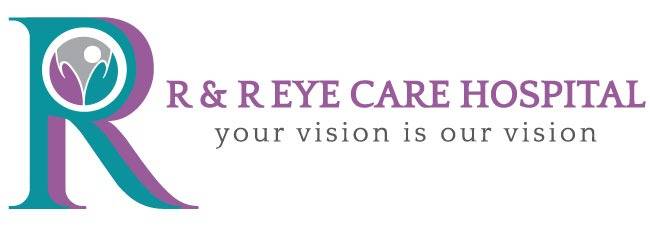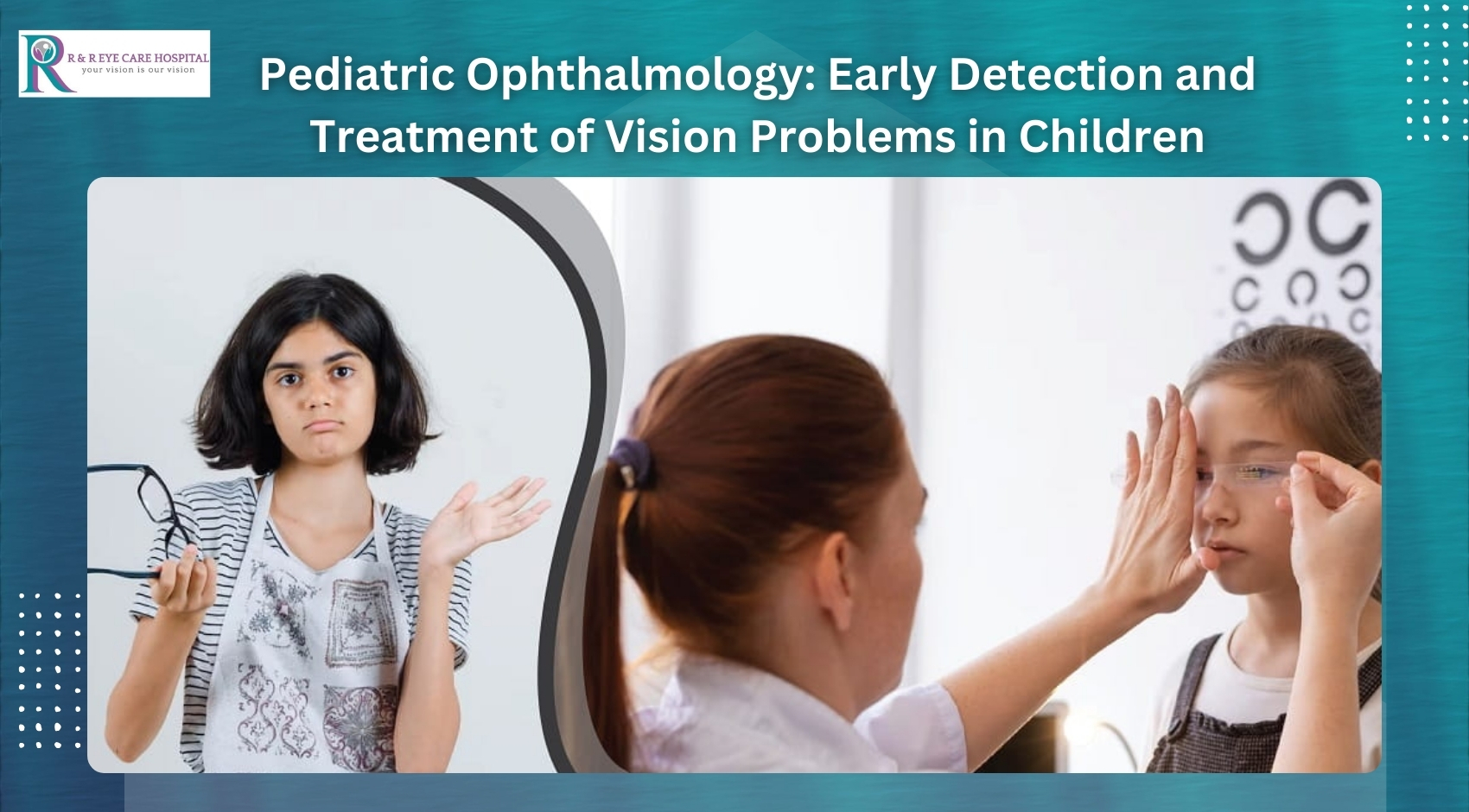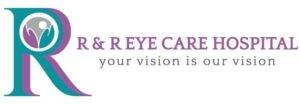Vision plays a crucial role in a child’s development, influencing everything from learning to social interactions. However, many vision problems in children can go unnoticed, as they may not always be able to articulate or recognize issues with their sight. That’s why early detection and treatment of vision problems are essential for ensuring healthy development. At R & R Eye Care Hospital, we specialize in pediatric ophthalmology, providing expert care tailored to the unique needs of children. In this blog, we’ll discuss the importance of early detection, common vision problems in children, and the treatment options available.
The Importance of Early Detection
Early detection of vision problems in children is vital for several reasons:
Developmental Milestones: Good vision is critical for reaching developmental milestones, such as hand-eye coordination, reading, and recognizing faces. Undiagnosed vision problems can delay these milestones and impact a child’s overall development.
Learning and Education: A significant portion of learning in school is visual. Children with untreated vision problems may struggle with reading, writing, and other visually demanding tasks, which can lead to poor academic performance.
Social Interaction: Vision plays a key role in social interactions. Children with undetected vision problems may have difficulty recognizing faces or reading social cues, which can affect their ability to interact with peers.
Prevention of Long-Term Issues: Some vision problems, if left untreated, can lead to permanent vision loss or more severe eye conditions. Early detection allows for timely intervention, which can prevent or mitigate long-term damage
Common Vision Problems in Children
Several vision problems commonly affect children. Understanding these conditions can help parents and caregivers recognize potential issues early.
1. Amblyopia (Lazy Eye)
Amblyopia, commonly known as lazy eye, occurs when one eye develops differently from the other, leading to reduced vision in the affected eye. This condition is often caused by strabismus (misalignment of the eyes), a significant difference in prescription between the two eyes, or an obstruction in the eye, such as a cataract. If left untreated, amblyopia can lead to permanent vision loss in the weaker eye.
2. Strabismus (Crossed Eyes)
Strabismus, or crossed eyes, is a condition where the eyes do not align properly. One eye may turn in, out, up, or down while the other eye remains focused. Strabismus can cause double vision, difficulty with depth perception, and can lead to amblyopia if not treated. Early intervention is crucial for correcting the misalignment and preventing further vision problems.
3. Refractive Errors
Refractive errors occur when the shape of the eye prevents light from focusing correctly on the retina, leading to blurred vision. The most common refractive errors in children are:
Myopia (Nearsightedness): Difficulty seeing distant objects clearly.
Hyperopia (Farsightedness): Difficulty seeing close objects clearly.
Astigmatism: Distorted or blurred vision at all distances due to an irregularly shaped cornea.
Refractive errors are typically corrected with glasses or contact lenses, and early detection ensures that children can see clearly during their critical learning years.
4. Congenital Cataracts
Congenital cataracts are present at birth or develop during infancy. A cataract is a clouding of the eye’s natural lens, which can lead to significant vision impairment if not treated. Early detection and surgical intervention are often necessary to prevent permanent vision loss.
5. Ptosis (Drooping Eyelid)
Ptosis is a condition where one or both upper eyelids droop, potentially covering the pupil and obstructing vision. In children, ptosis can affect normal visual development and may lead to amblyopia. Treatment often involves surgery to lift the eyelid and restore normal vision.
Signs of Vision Problems in Children
Recognizing the signs of vision problems in children is essential for early detection. Parents and caregivers should be vigilant for the following symptoms:
Squinting: If your child frequently squints, it may indicate a refractive error or difficulty focusing.
Eye Rubbing: Excessive eye rubbing can be a sign of eye strain, discomfort, or allergies.
Head Tilting: Tilting the head to one side may be a sign of strabismus or other vision issues.
Closing One Eye: If your child closes one eye to see better, it may indicate a vision problem in the other eye.
Frequent Headaches: Recurrent headaches, particularly after reading or screen time, can be related to vision problems.
Difficulty with Schoolwork: Struggling with reading, writing, or other visually demanding tasks may indicate an underlying vision issue.
Wandering Eye: An eye that consistently wanders or appears misaligned is a sign of strabismus and should be evaluated by a pediatric ophthalmologist.
The Role of Pediatric Ophthalmology in Early Detection and Treatment
Pediatric ophthalmologists are specially trained to diagnose and treat vision problems in children. Regular eye exams are the cornerstone of early detection. The American Academy of Ophthalmology recommends that children have their first comprehensive eye exam at six months of age, followed by additional exams at three years old and before starting school. If there is a family history of eye problems or if the child exhibits signs of a vision issue, more frequent exams may be necessary.
Treatment Options for Vision Problems in Children
Treatment for vision problems in children varies depending on the condition and its severity. Here are some common treatment options:
1. Glasses or Contact Lenses
For refractive errors like myopia, hyperopia, and astigmatism, glasses or contact lenses are the most common treatment. Corrective lenses help focus light correctly on the retina, improving vision clarity.
2. Patching Therapy
For amblyopia, patching therapy is often used. This involves covering the stronger eye with an eye patch to force the weaker eye to work harder, thereby improving its vision over time. Patching is most effective when started early, ideally before the age of seven.
3. Surgical Intervention
Surgery may be necessary for conditions like strabismus, congenital cataracts, or ptosis. Strabismus surgery realigns the eye muscles to improve eye coordination, while cataract surgery removes the clouded lens. Ptosis surgery lifts the drooping eyelid to prevent vision obstruction.
4. Vision Therapy
Vision therapy is a structured program of visual activities designed to improve eye coordination, focusing ability, and overall visual function. It is often used for children with strabismus or other binocular vision problems.
5. Medications
In some cases, eye drops or other medications may be prescribed to treat specific eye conditions, such as infections, inflammation, or high intraocular pressure.
Conclusion: Prioritizing Your Child’s Vision Health
Early detection and treatment of vision problems are crucial for ensuring that your child can achieve their full potential. At R & R Eye Care Hospital, we are committed to providing comprehensive pediatric ophthalmology services to help your child see the world clearly. Our experienced team of specialists is dedicated to offering personalized care, from routine eye exams to advanced treatments. Schedule an appointment with us today to ensure your child’s vision health is on the right track.




Leave A Comment